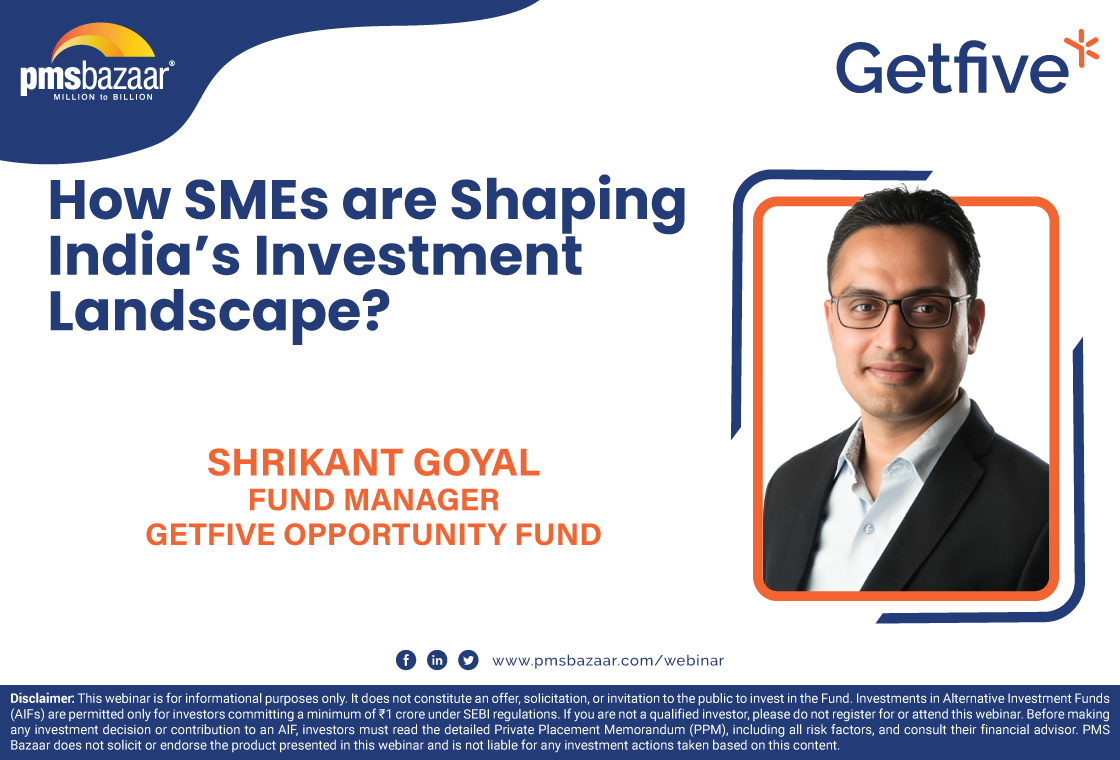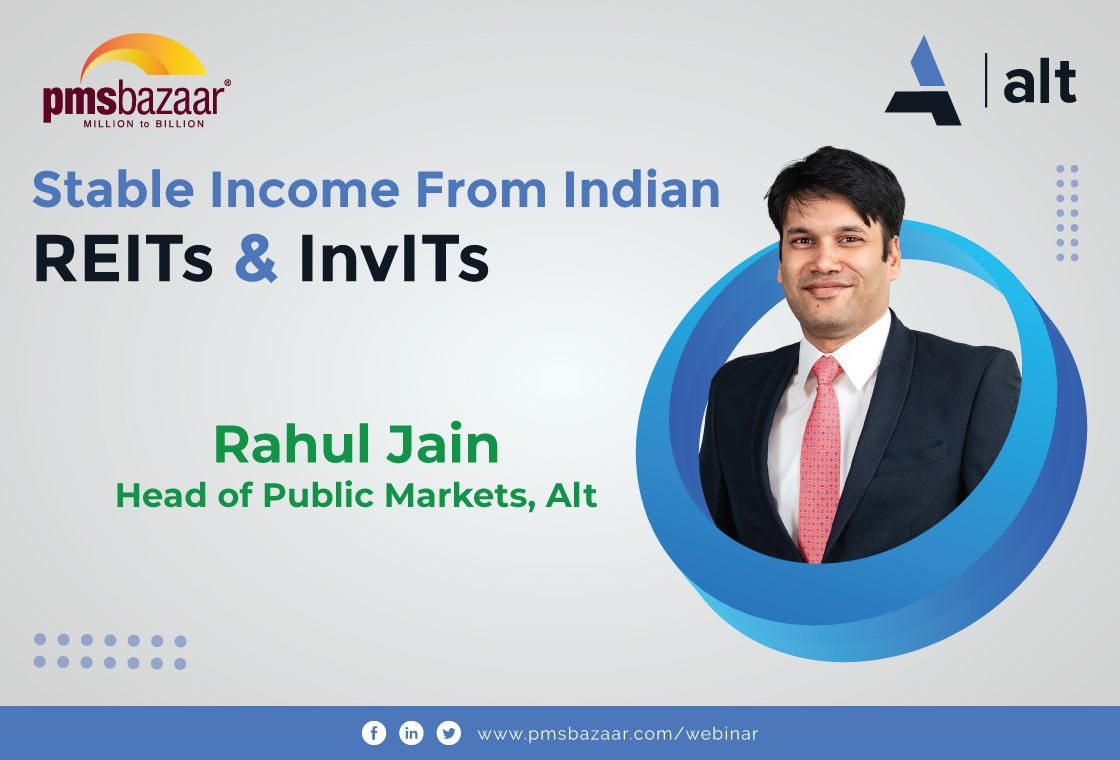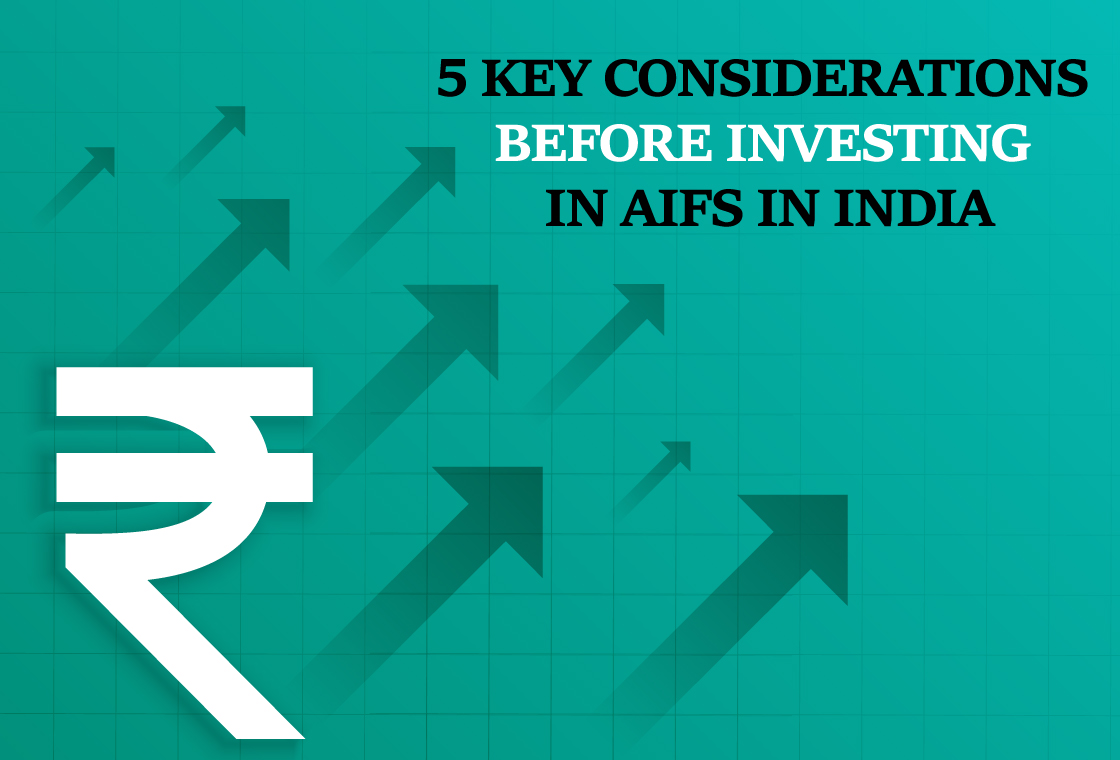A webinar on "Long-Term Quant Investing in Indian Markets" was hosted by PMS Bazaar and featured Anirudh Garg, Fund Manager at INVasset. Read more to know what was discussed

The webinar discussed various topics relevant to long-term investing in India using quantitative analysis. This included market trends, investment strategies, forecasts, analysis of mid-cap stocks, the effects of inflation, and how markets change over time.
Additionally, the webinar offered views on quantitative investing with mutual funds and portfolio management services (PMS), emphasising the personalised approach and client focus of INVasset. Anirudh Garg's well-rounded view on investment philosophy and market dynamics was also a key part of the discussion.
Note that any discussions on stocks or sectors are not to be construed as a recommendation or advice.
Key aspects covered in this webinar blog are:
- Market trends: Earnings, consumption and geo-political tensions
- Quant strategies, and PMS vs mutual funds
- Risk management and portfolio management
- Addressing valuation concerns
Get access to rich data and analytics of PMS & AIF by subscribing to us. Join the 60000+ investors & experts: Subscribe NOW
Recent Blogs

Long-Only AIFs Rebound Sharply in October; Long-Short Strategies Lag Despite Lower Volatility
106 long-only AIFs averaged 3.68% vs 32 long-short AIFs at 2.7%; only 24–31% of funds beat key indices

Markets log strongest monthly gains in 7 months; PMS performance turns near-uniform in October
Nifty 50 TRI gained 4.62%, BSE 500 TRI rose 4.27%; 415 of 427 equity PMSes ended positive

How SMEs are Shaping India’s Investment Landscape?
PMS Bazaar recently organized a webinar titled “How SMEs are Shaping India’s Investment Landscape?” which featured Mr. Shrikant Goyal, Fund Manager, GetFive Opportunity Fund.

Stable Income from Indian REITs and InvITs
PMS Bazaar recently organized a webinar titled “Stable Income from Indian REITs and InvITs,” which featured Mr. Rahul Jain, Head of Public Markets, Alt.

5 Key Considerations Before Investing in AIFs in India
Alternative Investment Funds (AIFs) have emerged as a compelling option for sophisticated investors seeking diversification and potentially superior returns. But venturing into AIFs requires a clear understanding of their unique characteristics that go beyond simply knowing what they are and their categories.

How AIF can help in diversification?
Traditionally, Indian investors have relied on a mix of stocks and bonds to build their wealth. While this approach offers diversification, it can still leave your portfolio vulnerable to market fluctuations. Enter Alternative Investment Funds (AIFs), a dynamic asset class gaining traction for its ability to unlock diversification beyond the realm of conventional options.

Long-Short AIFs Outperform Again Even as Markets Rebound in September
104 long-only funds shows an average monthly gain of just 0.37 per cent, while long-short AIF category averaged 0.94 per cent

Resilience returns as markets rebound in September; Multi-asset PMSes lead pack
Over 63% of equity PMSes ended September in green; nearly two-thirds outperformed key benchmarks.

